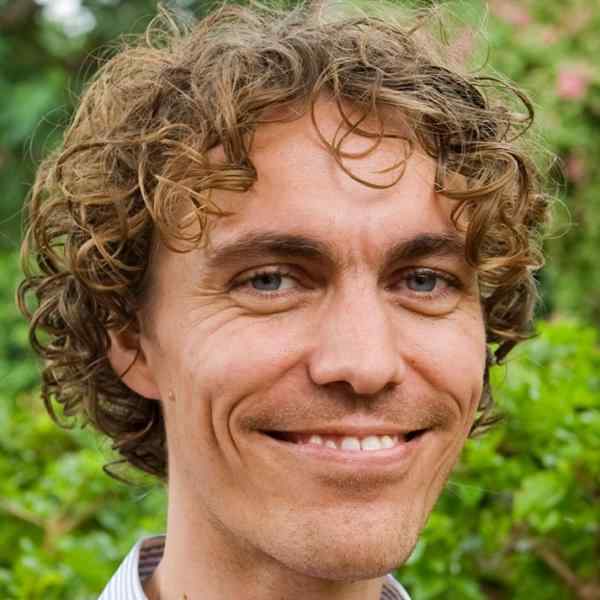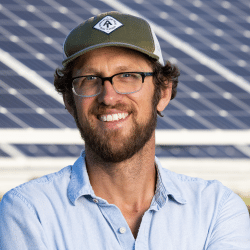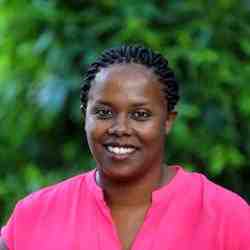Introduction
Though cotton farming as widely practiced in India today is a high-risk, low-profit, resource-intensive, and even dangerous endeavor, Gijs Spoor has created a way for farmers to raise the crop to meet fair trade and organic standards and increase their incomes, improve their health, and protect the environment. His organization, Zameen, coordinates a large network of producer companies and extension workers who bring the control of sophisticated cotton production to the local level so that small farmer-owned enterprises can grow. He also employs market ambassadors who promote the farmers’ products and create direct links between the rural producers and European companies and consumers
The New Idea
Through a large and coordinated network of producer companies and extension workers, Gijs is putting the control of sophisticated cotton production into the hands of small-farmer owned enterprises. Groups of poor Indian cotton farmers that want to transition to fair trade organic production and be part of Gijs’ socially and environmentally friendly company, Zameen, are vetted and organized into clusters that receive management and professional development training. At the same time, Zameen works through it’s market ambassadors with companies in Europe to ensure producers that there will be a market for their cotton once it passes through their pioneering fair trade plus organic certification process.
Since Zameen is engaged throughout the supply chain, more profits and control can be passed along to the small farmers of cotton. Cotton farming as widely practiced in India today is a resource-intensive and even dangerous endeavor. Zameen farmers, however, are proving that raising the crop to meet fair trade and organic standards is not only profitable, but more healthy for farmers, more equitable for women, and more beneficial to the environment. Given the small scale of their individual operations and Zameen’s commitment to capacity building and transparency, Zameen can guarantee compliance with fair trade standards in ways that large multi-national labels cannot. And farmers themselves can begin to invest in better ingredients and more sustainable practices. Zameen has been able to use these success stories and its international reach to connect with companies and consumers around the world.
Zameen currently works across 250 villages in India and with brands throughout Europe. They focus on fostering values and ensuring that everyone along the supply chain is inspired to ask, “does what I’m doing reaffirm Zameen’s core values of environmental protection and the welfare of rural producers?” When the answer is “no,” Zameen’s team springs into problem solving mode. But when the answer is “yes,” the vital links between producers and consumers and between people and nature are strengthened. Rooted in these values, Zameen has been able to restore the rights of producer communities by focusing on the true value they add to society and the economy while empowering them to take the lead in improving their own wellbeing.
The Problem
Poor farmers of cotton in India work in dangerous conditions, on deteriorating fields, and for little profit. They make up many of the more than 300 million Indians who earn less than $2 a day and live in rural areas where farming often amounts to little more than a struggle for survival. As farmers organize into groups and markets grow, their products are gaining access to more and bigger markets further and further away. But it’s often only the distance between poor producers and global consumers – but not necessarily the producers’ profits – that grows larger.
Even approaches like organic certification that, if done well, could greatly benefit local farmers have failed to transform the lives of most poor producers. In particular, the movement towards organic certification for cotton grew too fast and unregulated around the world and in India today the certification system is in complete shambles. Large commercial enterprises and unethical operators can now essentially buy an organic certification. The potential for an organic certification to dramatically change the lives of poor producers and improve the environments in which they live and work has dissolved. Because of a fractured certification system, certified organic cotton today runs the risk of turning into a corporate marketing trick and never becoming a tool for improving the living conditions of poor farmers or the quality of their products.
Of course, the big problem here is not that consumers are being duped, but that the quality of farmers’ lives and the environmental integrity and biodiversity in cotton producing areas continues to be threatened when the spread of organic farming could have a significant and positive impact. Sixty percent of all toxic chemicals used in India are for cotton farming. Pesticides and insecticides are not necessarily needed to produce cotton, yet cotton farmers in India habitually use some of the most potent chemicals available including endosulfan, a compound banned in more than 50 countries but still used extensively in India. On top of that, there is a near total lack of safety measures and equipment and protective clothing are prohibitively expensive and notoriously low quality.
Today, the way the most Indian cotton is grown actually makes the farmers and fields dedicated to this, the world’s most thirsty crop, more vulnerable. When mixed with pesticides and insecticides, the water used is polluted. And though genetically modified “Bt” cotton kills pests and microbes without chemical pesticides, microbes are important for digestion in ruminants’ intestines and, in turn, manure from ruminants is an important natural fertilizer. Over time, as the nutrients in the soil are depleted and dependence on carbon-based fertilizers increases, the toll on the environment grows greater.
In this way, many Indian cotton farmers have been forced into a spiral of debt from loans they have procured to buy pesticides and chemical fertilizers. When the cotton price drops so low that debts cannot be repaid, many farmers become suicidal and farming communities spiral downward even faster. But even the standard prices barely make cotton farming a profitable enterprise. By most assessments, the payments that end up in farmers’ pockets remain abysmally low because of the many agents working throughout the international supply chain and the large profits that go to the international brands. Intermediaries alone can extract as much as 15 percent of the end price for performing tasks like checking on the status of a dipstick in the dye lab or ensuring that the right cotton is rolling off a particular loom. Though there is generally a lot of scope for redistribution back to local producers, no one in the current model is taking up the farmers’ case and many farmers are trapped, often without other means of subsistence, and obliged to produce more and more no matter how low the prices.
The Strategy
Gijs’ goal is to work with marginalized producers and farmers and help move them towards economic self-sufficiency and stability. He also aims to allow them to become greater stakeholders in their own production companies and generally play a more strategic role, and achieve greater equity, in international trade. With more ability to make decisions about the things the affect them, local producers can be more proactive protectors of the environments in which they live and work. Indeed, a deep value for human and natural resources and of trust is at the core of the organization that Gijs has built, Zameen.
Though Zameen, Gijs is now re-engineering the entire cotton value chain starting with organizing and professionalizing the work of small-scale farmers. Many farmers in India have already joined together in small groups of fifteen or so in order to better access markets, but most soon realize that the challenges they face originate higher up. Zameen provides an opportunity for farmers not only access markets, but to do so in a system in which the net benefit of all producers is valued, not just the finished product’s net weight. Hundreds of interested farmer groups have successfully used Zameen’s rating tool to confirm that their values match Zameen’s, joined the organization, and have become the basic building blocks of larger clusters. Clusters, the main programmatic unit, are made up of 200-300 farmer groups and are in charge of (1) governance, (2) providing extension services, and (3) monitoring certification and quality control. Each cluster funds its own work through a mix of beneficiary ownership and venture capital, a winning combination that allowed Zameen to grow rapidly due to the venture capital while remaining accountable to the famers/owners who are the majority shareholders.
Zameen currently works with seventeen clusters, all at different stages of development. In all cases there is an incubation period in which the cluster is established and the farmers’ confidence is built up so that they can ultimately manage all the systems themselves. Depending on level of education and experience in the area, this can take from two to six years. Throughout this period, Zameen offers tailored trainings to elected cluster leaders, and farmers establish systems so that they can hold accountable the professional staff they hire (and agree to pay salaries higher than their own, understanding that this is required to take their subsistence farming to the next level). Of the seventeen clusters, five are just one step away from being self-managed; they are undergoing the final rating by Zameen and will soon independently manage the operations, do extension work, and work with local government planning commissions. With steady income and professional development, young staffers of these clusters are now even planning their careers with Zameen in mind.
At the central level, there is Zameen the fair trade organic cotton company and, alongside it, a non profit service provider called the Agriculture and Organic Farming Group (AOFG) that supports the small farmer organizations taking part in the formation of the company. AOFG finds service providers that do trainings on themes like financial literacy; they often link with microfinance organizations and might bring all treasurers of the clusters through the microfinance institution’s training on bookkeeping.
While AOFG is strengthening the capacity of the producers from the ground up, Zameen is reaching out to companies through its business efforts and, through advocacy and marketing, working to create the definition of and demand for fair trade organic products. While organic might be hard to define, it is not hard to trade. But fair trade organic is more complicated; the concept is only four to five years old and doesn’t even have a strong foothold yet in US. The market is much smaller (mostly in Europe) and most of the industry hasn’t been exposed to the concept much less understand the business logic.
So Zameen deploys its merchandise team and “market ambassadors” to work with buyers, mills, and international brands and explain how streamlining the process by only engaging actors along the supply chain who are committed to fairly traded organic cotton constitutes a new and more equitable value chain. Some don’t understand at first and many haven’t even studied their own value chains. Others are wary because once locked in they fear they won’t be able to retool, renegotiate, and move within the supply chain. For this reason, Zameen has to engage buyers and mills throughout and, with brands at the end of the supply chain, must begin by explaining the whole process and ensure that there will be transparency and 100 percent trace-ability throughout. They also explain to brands that, in this new system, value placed on the producers and the environment can be used to connect with consumers. For this reason, the merchandizing team focuses on how they capture efficiencies and pass profits to workers along the fifteen production steps between raw cotton and finished products while the market ambassadors are charged with helping retail brands develop their thinking and messaging around social and environmental impact.
In just one current case, Zameen is working with H&M, a large European clothing chain with stores around the world. H&M had never before coupled its corporate social responsibility (CSR) work to its core business, but the company has identified and appealed to its customers’ support of charitable causes. A euro on top of the price of a t-shirt in some promotions would be donated to an organization working with women or on water issues or to UNICEF. But by helping the whole company look inwardly when tackling issues of social responsibility, Zameen is showing that H&M can tell a compelling story to their European consumers about their direct links to Indian producers and the transformation that everyone in the company is a part of as profits and incentives for all the employees along the supply chain continue to grow.
And Zameen has tons of stories. When sitting together with buyers, all Zameen has to do is help them decide which is the most compelling to tell. For Mother’s Day, one could easily highlight the impact of organic fair trade on women. Zameen can show that, in its farmer groups, it is often the women who carry water and do most of the weeding who, when given the option, advocate more loudly to go organic than their husbands with their masculine affinity for industrial sprayers. For companies and consumers interested in environmental impact, Zameen has an ample supply of success stories in this new system that places more value on the environment. Clusters have been successful in launching organic and ayurvedic cottage industries in making pesticides from crushed neem seeds or cow urine and egg yolks, both effective local approaches. And intercropping with ‘ecofeast crops’ or ‘long crops’ has attracted pest-eating predators and birds. Gijs has also been linking with organizations in Mali and throughout Africa so that someday French consumers with an interest in Francophone West Africa could be connected to fair trade producers there as well.
In aggregate, these stories tell of the deep and lasting change in the lives of poor and small-scale cotton producers. They are made possible and all the more compelling because of Zameen’s commitment to being 100 percent transparent both financially and operationally. In the end it is clearly not just Gijs but the communities who own their producer companies and manage their knowledge systems, technical assistance, and extension services that are reinvigorating agriculture and protecting the environment. And with growing momentum, fair trade organic is taking root and beginning to spread. Though currently working with seventeen, Zameen’s goal is to launch 100 clusters/companies worth roughly $400,000 each in the next five years and significant government, civil society, and venture capital funds are already coming in. Furthermore, having cut his teeth with cotton in the notoriously cut-throat “rag trade,” Gijs anticipates that, over the next few years, he will be able to begin expanding the fair trade organic model to spices, vegetables, honey, tea, rice, and pulses in India and share his learnings with producers around the world.
The Person
Gijs’ parents were filmmakers and when he was 8-years-old they came to India to make a documentary on children in Rajasthan. The individual who helped them make this movie was an organic farmer in Rajasthan – Inder Dan Detha. He came to the Netherlands for the promotion of the film and Gijs had the opportunity to spend time with him. Inder had a profound impact on Gijs and has continued to be a major influence and source of inspiration in his life, so much so that when Gijs was just 15 he started to learn Hindi and, as soon as he finished his education, he came to India to work on Inder’s farm and learn about organic farming and the complexities of India and rural development.
Gijs left India for university, but the lasting impressions on him made by India and Inder were clear. He charted his own 5-year academic course focused on organic agriculture and fair trade at the only university in the Netherlands offering an agriculture program at the time (1998). During his university years, when the university faced budget shortfalls and considered cutting the traditional agriculture program in favor of bio technology, Gijs became a student leader and actively (and successfully!) lobbied the university to keep the program and wrote articles and policy papers that emphasized the importance of rural development.
After graduation, Gijs decided to come back and settle for good in India. Gijs had worked with Solidaritat, a global fair trade organization, and his first task in 2003 was to learn as much as he could in two weeks and come up with a project dealing with cotton and textiles in India. He went and met anyone who did anything within the textile industry in India and realized that, at the time, there was no fair trade movement in India, just a growing awareness organic farming. Solidaritat had been preparing a network of brands that were interested in ethical sourcing and Gijs developed the platform to do joint sourcing and joint communication to their end customers. While he learned an important lesson on how one can bring competitive brands together to do something for the common good, he saw the limits to a strict market access approach and saw how global organizations thought it was easy to get fair trade certification until it came time to hit the ground and talk to farmers. He knew that the focus needed to be on small-scale producers.
In 2006 Gijs launched Zameen and has steadily built the organization to what it is today. Gijs is deeply committed to the fair trade movement and believes that “communities that live on the interface between human society and nature have lost recognition, respect and dignity. Farmers, forest dwellers, and fishermen are not only producers of natural goods but also guardians of the fragile ecosystems that make our planet inhabitable. However, they are not rewarded for the public goods they create.” Through Zameen, Gijs has taken up the case of cotton farmers in India and, based on his success, he is now looking to scale and replicate his model in other fields and regions.




